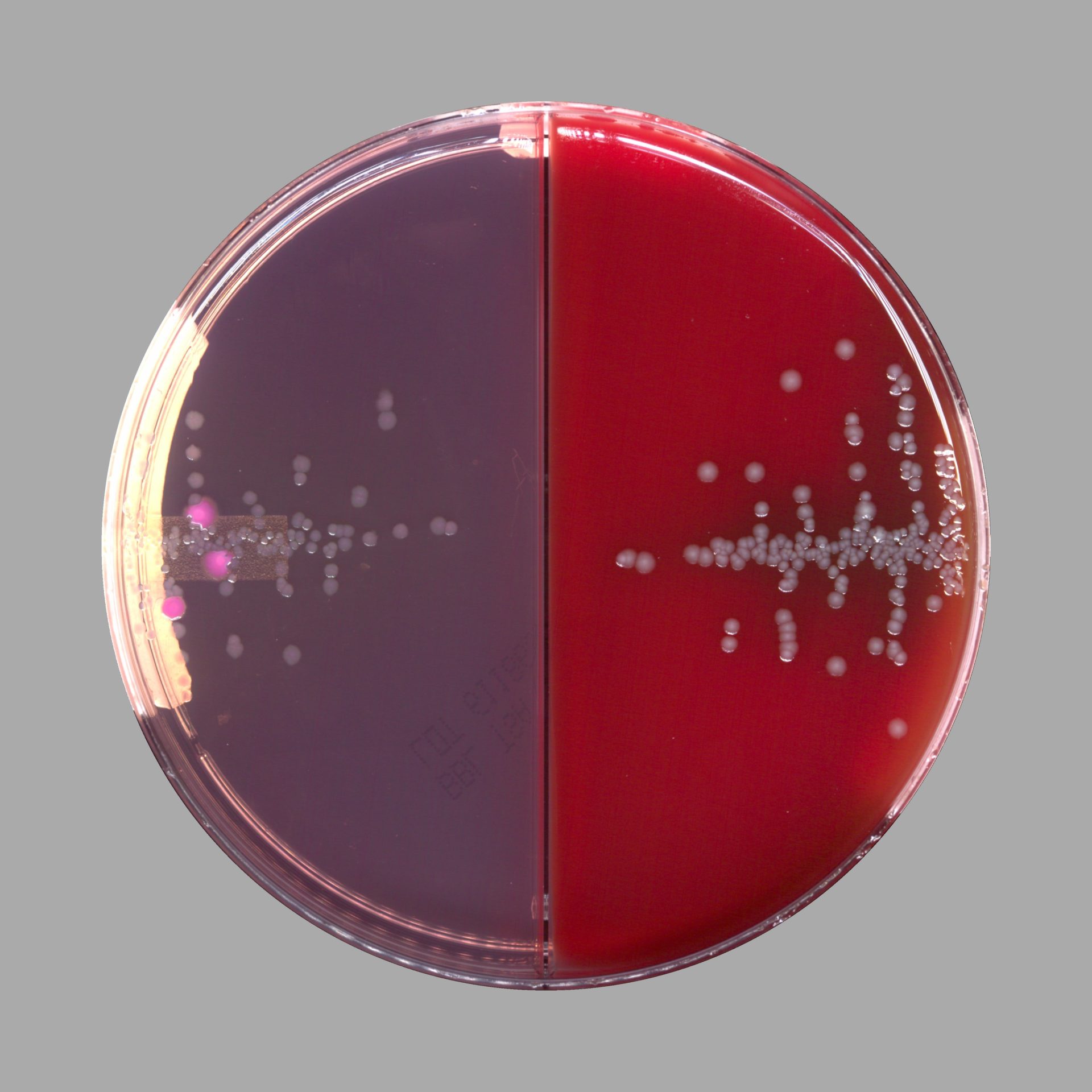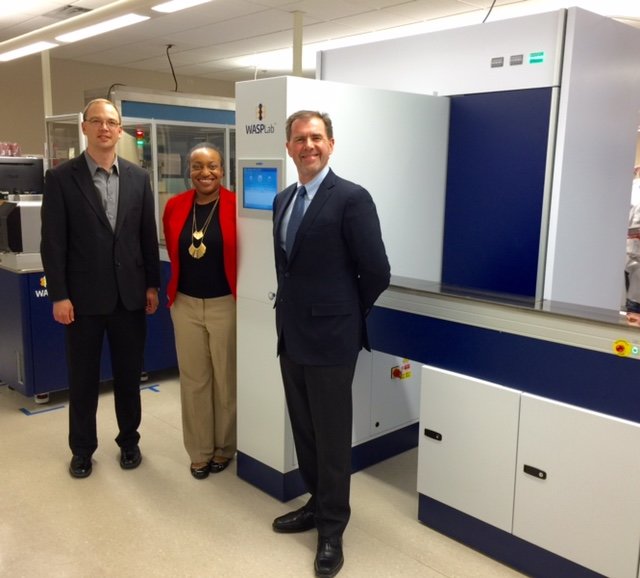COPAN and TriCore | Igniting Change with Innovation
October 17, 2016
Superbugs. New regulations. Changing reimbursement policies. Retirements.
These are just some of the pressing Healthcare issues the Microbiology community is currently facing, requiring a shift in philosophy and procedure.
COPAN Diagnostics, Inc. (Murrieta, CA) and TriCore Reference Laboratories (Albuquerque, NM) met with a group of Microbiologists from different leading laboratories to discuss why Liquid Based Microbiology, lab automation, and coordinated care are influential to the future of healthcare.
The Albuquerque-based event “Automatic Reading and Segregation of Cultures: The Value Proposition and Improved Time to Resulting Has Arrived,” was followed by a tour of the WASPLab® system installed at TriCore Reference Laboratories (TriCore). In order to understand the evolution of microbiology automation, Dr. Suzane Silbert, the Clinical Scientist of Esoteric Testing Lab and Pathology at Tampa General Hospital (Tampa General), explained the history of Liquid Based Microbiology (LBM) and its role in clinical microbiology.
The move to automation in clinical microbiology was initially very challenging. Unlike Chemistry and Hematology, Microbiology involves a diversity of specimen types, making it difficult to manufacture a system that could process them all. Prior to LBM, microbiology was managing a variety of specimens with different viscosities, and in addition were being received in different size and shape containers. Blood and urines are liquids, but what about the rest of microbiology samples? The answer was simple! COPAN’s Liquid Based Microbiology (LBM) approach, facilitated the standardization of collection and transport systems, specifically ESwab™, SnotBuster™, and FecalSwab®. Dr. Silbert and her team at Tampa General have conducted and published many studies that confirm the effectiveness of LBM for collection and transport! At a large medical facility like Tampa General, standardizing on products like ESwab™ dramatically streamlined workflow and brought efficiencies and savings for the lab and the hospital. Physicians and nurses, more often than not, only have to reach for ESwab™ for routine clinical microbiology and esoteric testing. By the same token FecalSwab® is now in process to be Tampa’s universal enteric transport for bacteria, virus and parasite investigations. All LBM systems are designed for microbiology lab automation.
COPAN’s ESwab™ is first in its class to convert swabs into liquid phase, consolidating the collection and transport for different specimen collection sites, for different bacterial investigations. ESwab™, contains 1 mL of liquid Amies and a regular flocked swab (FLOQSwabs®). ESwab™ maintains the viability of aerobic, anaerobic, and fastidious bacteria for up to 48 hours at room and or refrigerator temperature. ESwab™ is also available with minitip applicators for pediatric, ENT and urogenital sample collection.
Dr. Silbert also examined the use of SnotBuster™ for sputum. She confirmed that “SL solution (SnotBuster™) using the Copan Sputum Dipper is an efficient way to liquefy sputum.” She noted that, “specimens treated with SL solution, when plated, produced consistent and reproducible results.” She went on to say that “in most cases, recovery rates of microorganism growth were higher and superior after processing the sputum with SL solution.” With SnotBuster™, the sputum is liquefied in instrument ready tubes, standardized for the use of automation.
FecalSwab®, the third addition to the LBM family, simplifies both fecal sample collection and rectal swabbing, transport, and processing, by converting solid or semi-solid specimens into liquid phase. By transforming fecal samples into liquid, automation is now able to easily process fecal material. Dr. Silbert presented the findings of her and her team that showed that FecalSwab® works as well as traditional Cary-Blair medium for stool sample preservation and molecular enteric testing!
Automation and Artificial Intelligence
With a better understanding of LBM and its role as a catalyst for automation, COPAN welcomed Dr. Nathan Ledeboer, Associate Professor of Pathology at the Medical College of Wisconsin and Medical Director, Microbiology and Molecular Diagnostics, Dynacare Laboratories and Froedtert Hospital, to speak about the benefits and sophistication of algorithms that set COPAN’s WASPLab® automation apart from the competition.
Dr. Ledeboer’s discussion took a deeper look at automation, examining its drivers and benefits. He began his talk by addressing the diminishing workforce, as many with expertise are retiring, and not as many graduate programs are producing new microbiology technologists. Many of today’s laboratories are responding to the challenges of a shrinking workforce, policy changes, and adjustments to the reimbursement plans by consolidation. Often times, laboratories are expected to do more with less. Dr. Ledeboer explains how implementing WASPLab® facilitates a laboratory’s ability to redirect their skilled workers to the tasks that require expertise. By reallocating tasks, a lab can eliminate some ergonomic injuries that may result from repetitive stress and improve overall employee satisfaction. When the laboratory professionals are able to focus on the ‘hard stuff’ their quality of life improves and the quality of specimen plating remains consistent, as unlike a human, the automation won’t get tired!
He went on to present his data on the reading segregation software and reading algorithms, a technology currently unmatched in the market. WASPLab® system’s segregation software or image analysis, aids the Medical Technologist, by comparing 0 hour images with the images of plates at user defined intervals. Differential image analysis works by subtracting any artifact already present on the plate from anything new growth detected at the pre-determined time interval. By using algorithms, WASPLab® is able to differentiate growth from no growth and automatically segregate the plates for the Medical Technologist. With a simple click of a button, the Medical Technologist can automatically discard any “no growths,” and focus on samples that need attention.

To help demonstrate the breadth of this technology, Dr. Ledeboer presented two studies regarding the WASPLab® Image Analysis software using of different types of chromogenic media. The first study titled “Automated Scoring of Chromogenic Media for the Detection of MRSA using the WASPLab® Image Analysis Software” explained how the WASPLab® was used to test 57,690 samples between four international laboratories, using several different kinds of chromogenic media. In the study, the Image Analysis software on WASPLab® was able to find an additional 153 positive plates that were missed by manual reading. The study reported that WASPLab® had 100% sensitivity and due to a purposely low threshold scored between 90-96% specificity between each location! The sample size for an Image Analysis software study is unprecedented and help illustrate that WASPLab® can be used to speed up test results for MRSA on chromogenic media.
The second study, titled “Automatic Digital Analysis of Chromogenic Media for Vancomycin-Resistant-Enterococcus Screens Using Copan WASPLab®,” was similar in that it used chromogenic media and was a collaboration between several laboratories. This study comprised of an enormous 104,730 patient samples. Once again, WASPLab® had 100% sensitivity and 89.5% specificity. Similar to the last study, an additional 498 plates were scored positive, that had been missed by manual reading and upon second evaluation, found the automation was correct!
To wrap up the discussion with some applied ROI examples, COPAN invited Dr. Karissa Culbreath, the Scientific Director and Infectious Disease Assistant Professor for the Department of Pathology at TriCore Reference Laboratories, to speak about TriCore’s experience with WASPLab®. She presented the direct effects that have resulted since implementation. When it comes to urines, they have reported moving from processing urines over the course of 19 hours, down to 8.5 hours. At TriCore it was noted that the WASP processor significantly shortens the time from specimen received to specimen planted while WASPLab reduces the time to final report for pure cultures. TriCore is looking forward to increased utilization of chromogenic agar to take advantage of expanding number of Copan image analysis tools that allow rapid segregation of no growths and normal flora from positive cultures and for the detection of specific pathogens.

So what does all of this information mean for the future of healthcare?
In the current healthcare system, many times physicians are prescribing antibiotics through empiric diagnosis, which has been linked to an increase in multidrug-resistant bacteria. This threat has led to new antibiotic stewardship programs. As illustrated by both, Dr. Culbreath and TriCore’s CEO Mr. Khosrow Shotorbani, the benefits of providing physicians with timely and actionable results can positively impact patient outcomes, optimize resources, and potentially reduce the propagation of antibiotic resistant bugs. The advances in technology will facilitate the laboratory’s move from a volume based approach to a value based approach. In fact, this would be in alliance with the National Action Plan for Combating Antibiotic Resistance, a strategic plan against antibiotic resistance, that was published by the White House in March of 2015.
Suddenly, technology increases the relevance of the laboratory in the course of a patient’s treatment. By having a database, which provides cross communications between facilities, different laboratories can talk to each other and receive a more comprehensive snapshot of the patient’s history. This is huge for improving patient diagnosis and outcome. By positioning laboratories as information centers, automation isn’t just about automating processes, it is about providing faster results within the therapeutic window that can lead to improved patient care.

